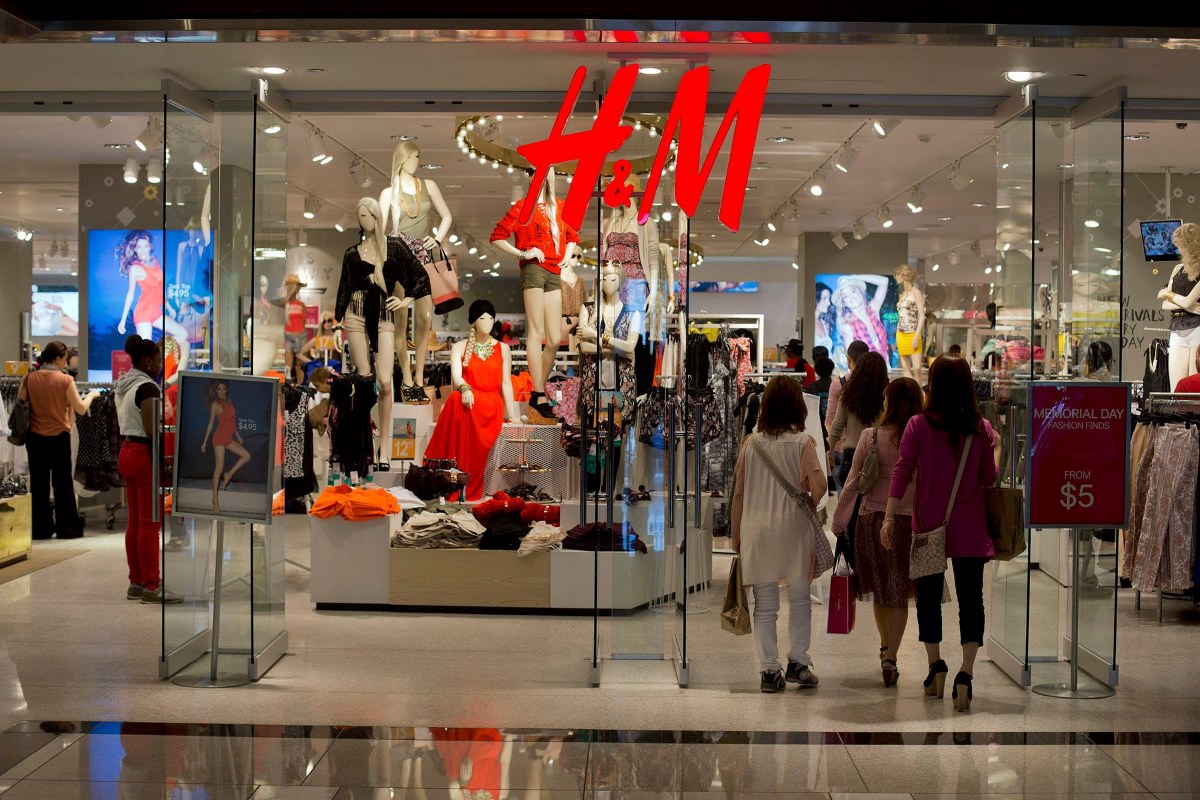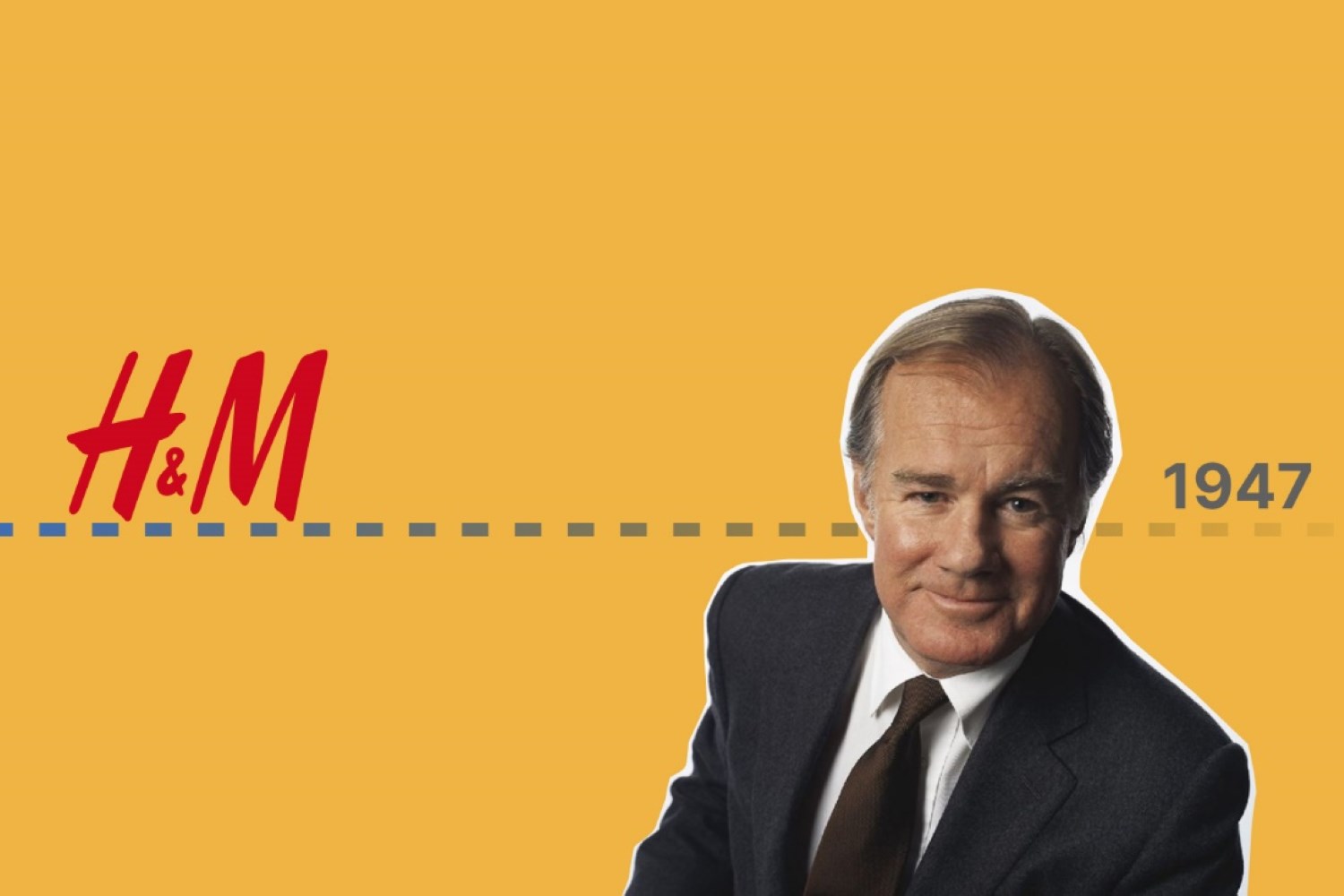The Retailer Possesses the Spell of “Disposable” Fashion
If you’ve ever questioned when fashion trends entered their golden phase so quickly, it was in the 1960s and 1970s. At that time, young people were developing new trends and using clothing as a means of self-expression, but there was still a difference between high fashion and high street.
That’s why it’s reasonable enough for fast fashion to appear in the mid-2000s that relies on the ‘trendy’ apparel featured at Fashion Week around the globe, albeit a cheaper alternative, and can be found in many high street stores. The ‘fast’ component of production is fueled by shoppers who expect the latest styles as soon as possible.
So, who emerged as the very first real “fast fashion” retailer?
In fact, H&M is indeed the longest running of these retail outlets, debuting as Hennes in Sweden in 1947, expanding to London in 1976 and ultimately hitting the states in 2000. Since its inception, H&M has grown to become the world’s second-largest fashion retailer.
The continued success of the retailer depends heavily on their loyalty to fast fashion. Today, the status of H&M in the game is undeniable. However, little do people know that the idea of H&M originated from its founder Erling Persson’s road trip across the United States that later architected enormous growth for years. Let’s find out.
The Destiny of Fast Fashion and H&M Empire
After World War II, Erling Persson made the decision to go on a road trip all across United States. He noticed a developing trend in the women’s fashionwear sector while he was there. As a businessman, he recognized this chance and launched Hennes as soon as he got back to Sweden in 1947.
“Hennes” meaning “hers” in Swedish – since this company was only selling women’s clothes at the time. The driving force behind the fashion brand was to make designer clothing accessible to women of all classes. During that time, the fast fashion market was just starting to develop, and Hennes began to spread across the nation. After ten years, the company began to establish its presence in the neighboring country of Norway and started making clothes for men as well. Accordingly, Erling Persson renamed his brand to Hennes & Mauritz, later on abbreviated to H&M.

Quickly after their initial public offering (IPO) in 1974, the company started broadening across Europe and by the 1990s opened its first stores in the USA as well. Now H&M is present in more than 74 countries and offers online shopping to at least 33 countries.
Before the emergence of global retail behemoths like H&M, American consumers were on the hunt for garments that was trendy-yet-affordable had to go to the mall and trend-driven teen local shops such as Wet Seal, Express and American Eagle.
Although these mall stores can be considered the American forerunners of the fast fashion empire, they were unable to produce new fashion trends as quickly as what is now expected. Their quick downfall was caused by the failure to maintain shelves filled with a wide array of new products in a matter of weeks. This is why H&M has a well-timed entry to the US.
When the first H&M store in the U.S. opened, the New York Times stated that the brand had showed up at the right time as buyers had just lately become more likely to hunt for bargains and dismiss department stores.
We hate to say it, but fashion and affordability are typically hard to pair together. Somehow H&M has comprehended the riddle of making it work and offers consumers with runway trends at reasonable prices.
The game of fashion has always been so crowded, but once you see the demand that’s evolving to be a trend, you’re onto something. H&M saw that rising need and immediately stuck with that since day one and later on swam in a stream of abundance. However, having a core value is just the first step, a strategy which executes next movements is the tenet element in its winning over giants in the run.
The High Street Arrival Dominates Designers Throne
In the fashion “marathon”, not a lot of high street retailers can boast huge queues, crashed websites, and social media madness whenever they introduce a fresh collection. But H&M did all of these things like they don’t need to put in any effort, this is a standard they have come to expect every time they drop a collection.
According to Ann-Sofie Johansson, creative advisor at H&M, the secret to success is letting designers express their own sense of style. “Designers see we can really pull the collections off, we really want their aesthetics, and they are free to do what they want,” she says.
First, we have creativity, that’s something every fashion brand needs, and H&M is not the exception. But without a market fit, businesses can’t perform their best because there are no needs out there for their solutions. Fortunately, H&M was perfectly placed to capitalize on the growth of the middle-class when a significant portion of the consumers turned their eyes to fast fashion.
Those are some initially crucial ingredients to build a strong foundation. The next step of the retailer was to enhance its name in the market. At this point, H&M has always been leaning hard to collaborations.

To market the brand as a luxury fashion alternative, H&M has an annual collection with a luxury designer house. This has empowered them to stand out from such giant competitors as Zara and Uniqlo, who don’t often collaborate.
Since 2004, H&M has had some phenomenal collaborations with Versace, Balmain, and Karl Lagerfeld. To generate a lot of buzz for each new campaign, the retailer keeps items relatively scarce, endorses celebrities, and leverages its presence on social media.
Like the majority of fast fashion companies, H&M intentionally shortens the life cycle of their products. While being a dangerous tactic, if successfully implemented, it gives H&M an advantage over rivals in two crucial areas: lowering the number of discounted products and increasing client traffic.
Although H&M does offer discounts, it’s their sake to avoid them anytime possible — as they have with collaborations.
That adds to the reason why having a short product life cycle is beneficial for building a sustainable business model. Customers are more likely to make an immediate purchase when things are only on display for a short period of time rather than waiting for possible discounts. In their minds, taking on the risk of waiting means missing out on purchasing the products in the future.
The customer usually comes to visit a fashion store once per season (four times a year) to check out the latest outfits. But, in the fast fashion industry, H&M’s short product life cycle causes customers to visit the store much more frequently because they don’t want to lose out on the newest trends. This uplifts customer traffic above the norm, increasing the likelihood that someone will make a purchase.
It’s totally fair to claim that H&M is a master of marketing and monetizing on FOMO (The fear of missing out).
It still seems magical to some of us to buy styles at nice prices, for the reason that we don’t see the behind the scenes of the extraordinary performance. Next part will give you a breakdown of how they could offer such steal deal.
The Machine Translates into Low Prices and Success
One thing to be stressed is that H&M doesn’t own factories. Their items are manufactured by 850 independent suppliers, primarily in Asia and Europe. Typically, Asia produces goods with lengthier lead times, while Europe produces goods with shorter lead times.
H&M has production offices in key positions near suppliers. Production offices serve a variety of purposes, including serving as a point of contact between suppliers and designers. They use data from both sources to decide which providers are most practical and effective for a given product.
Besides, the offices play a vital role in functioning as auditors and conduct extensive safety and quality examinations to ensure requirements of the company are being fulfilled. Furthermore, the offices improve connections with suppliers and assist them in raising quality and working conditions. This enables the business to collaborate with suppliers to shorten lead times.
To get the greatest pricing, the highest quality, and the shortest lead times, you must place your order at the proper time. 80% of H&M’s inventory is produced in advance, with the remaining 20% being introduced based on current market trends.
Lead periods range from a few weeks to six months, with more stylish clothing that requires fewer quantities being able to be manufactured with less notice while more basic clothing and children’s wear are purchased in advance.
Everyone is aware that multichannel merchants must collaborate with logistics providers to streamline the movement of items into and out of the warehouse, cut prices, and decrease overhead. To optimize the process, more coordination between marketing, merchandising, and management is required, as well as collaboration with vendors.

For sure, H&M acknowledges that key player. The majority of manufactured goods are transported directly from the factories to the logistical hubs, where they are then delivered to the local stores. Inventory is held in regional replenishment centers before being dispersed to stores; stores don’t have backup inventories.
H&M was created before all the convenient technologies, but the giant was not conservative to adopt these advances when the time came.
The fashion behemoth relies on a highly developed IT system to combine the corporate office, administrative offices, manufacturing offices, and stores due to the complexity of the supply chain. This makes real-time communication possible.
Through IT, the retailer has information about the fabrics that each supplier has and can make intelligent choices as to where to place a specific order.
There is a central inventory management software. Each store has access to corporate logistics and H&M warehouses, which streamlines the ordering and replenishment of stores. The corporate headquarters may keep an eye on the patterns in each store’s sales and utilize this data to make design and manufacturing decisions that are focused on the customer.
H&M has formed an operating model that empowers the retailer to be adaptable and respond to market trends, but at the same time, to reach markets with low prices.
Due to its IT system’s ability to track customer patterns and the fact that 20% of its manufacturing is done with shorter lead times, the company is adaptable (mainly in Europe).
It can readily reload via its replenishment centers, which keep track of the inventory in each store, replace it as necessary and make it adaptable as well. Due to its strong working ties with suppliers, the company is capable of keeping prices under control while maintaining high standards of quality.
Success goes along with a smart strategy, and thanks to sticking to the plan, H&M has been experiencing enormous revenues.
Extraordinary Track Records Are Set and Broken
H&M Group’s global net sales in 2022 came to almost 22.25 billion USD. The Swedish fashion behemoth is the owner of names like Weekday & Other Stories, Monki, Cos, and H&M. Germany is the H&M Group’s largest market, with around 20 million Germans reporting to have made purchases there in 2019.
H&M has a long history and has developed into one of the fashion industry’s most known brands. More than 120,000 people work for H&M, which operates over 5,000 locations worldwide.
H&M has gone beyond the retail industry to serve as an investor. It has made 3 investments. Their most recent investment was on Jul 17, 2018, when Worn Again Technologies raised $6.2M. The retailer has had 1 exit under its belt, which was Wrapp.
The success of H&M has aligned with the rise of fast fashion over the last 2 decades. However, there’s been paraphrases for the adverse effect of fast fashion. And yet, in 2013, when the Rana Plaza garment manufacturing facility in Bangladesh collapsed, killing over 1,000 employees, the world received a reality check. Customers then really began to mistrust fast fashion and wonder what those $5 T-shirts actually cost.
H&M saw it coming even before the alarm rang. This has led to the shift in its strategy and trajectory on leading the charge for sustainability in fashion.
H&M Delivers Its Green Promise on Sustainable Fashion

H&M has borne the brunt of widespread growing concerns of fast fashion on the environment and the human side of workers. As the world is overwhelmed in clothes, H&M Group is partly responsible for this waste.
As of 2019, the fashion brand was producing 3 billion garments annually and had $4.1 billion worth of unsold inventory, part of which was utilized as fuel for a Swedish power plant.
The Persson family, who created the business and still holds the majority of its stock, wants to do its part to reduce this massive waste. The H&M Foundation was established by the family nine years ago, with $180 million of the family’s private fortune going toward projects that address social and environmental issues in the fashion sector.
The Foundation invested $100 million of this money on the Green Machine, an innovative new technology that may one day enable people to recycle clothing the same way they recycle Coke cans. It was part of a larger strategy to transform H&M from one of the greatest polluters in the fashion industry into a problem-solver.
The latest effort to boost sustainability in fashion is in 2023, when the retailer shifts into the business of textile-sorting via a venture to deal with waste in the fashion industry. This signifies a potentially very pivotal leap.
On the human side, H&M has made some improvements to its labor policies in recent years. Even so, the outcomes of its promises are still a big question that’s not yet answered.
While the company has made some progress for the environment and other aspects, H&M is still very much a part of the unsustainable fast fashion industry. The most obvious solution for H&M’s management to lessen the company’s environmental impact would be to produce fewer clothes. At this point, one of the main ongoing questions is whether H&M is willing to forego profit in order to improve the environment.
Notwithstanding, it’s still too soon to say if H&M doesn’t do anything to turn their sustainability goal into a reality. Even if the technology works as intended, recycling companies will need time to set up the necessary infrastructure before they can begin collecting home clothing. The silver bullet hasn’t popped up in the process yet, but it doesn’t remain hopeless to the future. Let’s see how H&M plays when fast fashion is getting to its grave.
Bottom Lines
The wearing of clothing is mostly restricted to human beings and is a feature of all human societies. The type and amount of clothes worn is determined by the wearer’s gender, body type, social environment, and geographic location. The body is covered by clothing, the feet and hands are covered by shoes and gloves, and the head is covered by hats and other headgear. The success of H&M comes from the coverage of all those things and some important spices for a balance of price and style.
At first, the retailer might just want to take advantage of the rising demand in the fashion industry when it was founded and entered its golden era. However, as the world is moving at every second, so are mankind’s demands in everything. Fashion interprets the message of certain generations, and in this moment, we start to hear the scream from the environment. Waiting for brands’ efforts seems to be illusional sometimes, instead, let’s do any possible things to help mother earth.









